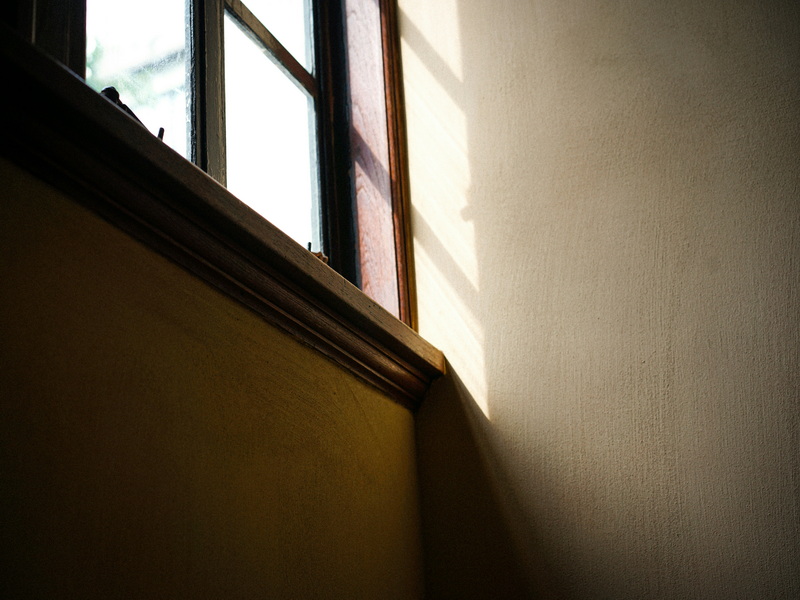English 




Views: 222 Author: Astin Publish Time: 2025-02-06 Origin: Site



Content Menu
● Understanding Aluminum Windows
● Opening Different Types of Aluminum Windows
>> Single-Hung and Double-Hung Windows
● Maintenance Tips for Smooth Operation
>> Inspecting and Cleaning Tracks
● Troubleshooting Common Issues
>> Humidity
● Upgrading Your Aluminum Windows
● FAQ
>> 1. How often should I clean my aluminum windows?
>> 2. Can I use WD-40 to lubricate my aluminum window tracks?
>> 3. Why is my aluminum sliding window difficult to open?
>> 4. How can I prevent my aluminum windows from sticking in humid weather?
>> 5. Is it normal for aluminum windows to be harder to open in cold weather?
Aluminum windows are a popular choice for many homeowners due to their durability, low maintenance, and sleek appearance. However, opening these windows can sometimes be a challenge, especially if you're not familiar with their mechanisms or if they haven't been properly maintained. This comprehensive guide will walk you through the process of opening various types of aluminum windows, provide maintenance tips, and address common issues you might encounter.

Before diving into the specifics of opening aluminum windows, it's essential to understand their basic structure and components. Aluminum windows come in various styles, including:
- Single-hung windows
- Double-hung windows
- Sliding windows
- Casement windows
- Awning windows
Each type has its unique opening mechanism, but they all share some common features. Aluminum windows typically consist of a frame, sash (the movable part that holds the glass), hardware (locks, handles, and hinges), and weatherstripping[2].
Single-hung and double-hung windows are vertical sliding windows. The main difference is that single-hung windows have only one movable sash, while double-hung windows have two.
To open these windows:
1. Unlock the window by turning the lock lever or pushing the lock button.
2. Place your hands on the bottom rail of the sash.
3. Lift the sash upwards firmly but gently.
4. For double-hung windows, you can also lower the upper sash if desired.
If the window is stuck, try gently pushing on the frame while lifting to release any pressure[4].
Sliding windows move horizontally along a track. To open them:
1. Unlock the window using the latch or lock mechanism.
2. Place your hand on the handle or frame of the sliding portion.
3. Push or pull the window horizontally along its track.
If the window is difficult to slide, check for obstructions in the track and ensure it's clean and lubricated[4].
Casement windows are hinged on one side and open outward like a door. They typically use a crank mechanism. To open:
1. Unlock the window by turning the lock lever.
2. Locate the crank handle, usually at the bottom of the window.
3. Turn the crank handle in a clockwise direction to open the window outward.
4. Continue cranking until the window is open to your desired position[7].
Awning windows are hinged at the top and open outward from the bottom. They also usually use a crank mechanism. To open:
1. Unlock the window.
2. Find the crank handle at the bottom of the window.
3. Turn the crank handle clockwise to push the bottom of the window outward.
4. Stop cranking when the window reaches your desired opening[7].

Regular maintenance is crucial for ensuring your aluminum windows open smoothly and function properly. Here are some essential tips:
Clean your aluminum windows every 3-4 months, or monthly if you live in a coastal or urban area. Use warm water mixed with a mild detergent and a soft cloth or sponge. Avoid abrasive cleaners or materials that can scratch the aluminum surface[8].
Apply a silicone-based lubricant to the moving parts of your windows, such as hinges, locks, and tracks, at least once a year. This will help prevent rust and ensure smooth operation[2][8].
For sliding windows, regularly vacuum the tracks to remove dust and debris. Inspect the tracks for any damage or obstructions that might impede the window's movement[4][8].
Examine the weatherstripping around your windows annually. If it's damaged or worn, replace it to maintain a good seal and prevent drafts[5].
Even with proper maintenance, you might encounter some issues when trying to open your aluminum windows. Here are some common problems and solutions:
If your window is stuck:
1. Check for paint or debris in the tracks or around the frame.
2. Ensure the lock is fully disengaged.
3. Try gently pushing on the frame while opening to relieve pressure.
4. For sliding windows, lift slightly as you slide to reduce friction[4].
For casement or awning windows with cranks:
1. Check if the crank mechanism is damaged or loose.
2. Lubricate the gears and moving parts.
3. Ensure the window isn't obstructed by anything outside[7].
If your window seems misaligned:
1. Check the hinges or rollers for damage.
2. Ensure the track is clean and free of obstructions.
3. Adjust the rollers or hinges if possible, or call a professional for realignment[4].
When opening aluminum windows, especially on upper floors, always prioritize safety:
1. Use window guards or locks to prevent children from falling.
2. Be cautious of pinch points, especially with sliding windows.
3. For large or heavy windows, consider asking for assistance to avoid strain or injury.
4. Always ensure the window is securely open before leaving it unattended[4].
The ease of opening your aluminum windows can be affected by environmental factors:
Aluminum expands and contracts with temperature changes, which can affect how easily your windows open. In extreme temperatures, you might need to apply slightly more force, but never force a window open if it's resistant[2].
High humidity can cause windows to stick. Using a dehumidifier in your home can help alleviate this issue[2].
If you live near the coast, salt air can corrode aluminum over time. More frequent cleaning and maintenance are necessary to prevent issues[8].
If you find that your aluminum windows are consistently difficult to open or are showing signs of age, it might be time to consider upgrading. Modern aluminum windows often come with improved hardware and design features that make them easier to operate and more energy-efficient[2].
When choosing new windows, consider factors such as:
- Energy efficiency ratings
- Ease of operation
- Security features
- Aesthetic appeal
Consult with a professional window installer to determine the best options for your home.
Opening aluminum windows should be a straightforward task when your windows are well-maintained and functioning correctly. Regular cleaning, lubrication, and inspection are key to ensuring smooth operation. If you encounter persistent issues, don't hesitate to consult with a professional window technician.
Remember, the specific method for opening your aluminum windows may vary slightly depending on the exact model and style. Always refer to the manufacturer's instructions for the most accurate guidance. With proper care and attention, your aluminum windows can provide years of reliable service, enhancing both the comfort and appearance of your home.

Clean your aluminum windows every 3-4 months in general. If you live in a coastal or urban area, increase the frequency to monthly due to higher exposure to corrosive elements or pollution[8].
It's not recommended to use WD-40 on window tracks. Instead, use a silicone-based lubricant specifically designed for window hardware. This will provide better long-term lubrication without attracting dust and debris[2][8].
Sliding windows can become difficult to open due to dirt and debris in the tracks, lack of lubrication, or misalignment. Regular cleaning, lubrication, and checking for obstructions can usually resolve this issue[4].
To prevent sticking in humid weather, ensure your windows are properly sealed and weatherstripped. Using a dehumidifier in your home can also help. Regular cleaning and lubrication of moving parts is especially important in humid climates[2].
Yes, it's normal for aluminum windows to be slightly harder to open in cold weather due to the contraction of the metal. However, if the difficulty is significant, it might indicate a problem with the window's installation or weatherstripping that needs to be addressed[2].
[1] https://www.youtube.com/watch?v=o-m9nYyzxB4
[2] https://windowhardwaredirect.com/blogs/news/essential-tips-for-effective-aluminum-window-repair-a-comprehensive-guide
[3] https://adamsandadamsconstruction.com/historic-aluminum-windows/
[4] https://windowhardwaredirect.com/blogs/news/how-to-remove-an-aluminum-window-a-step-by-step-guide-for-homeowners
[5] https://energyshieldwindowsanddoors.com/aluminum-window-cleaning-maintenance-dos-donts/
[6] https://www.garagejournal.com/forum/threads/best-way-to-remove-original-aluminum-windows.100943/
[7] https://www.youtube.com/watch?v=Dl9L9NFVjrU
[8] https://www.technal.com/en-uk/homeowners/guides/care-and-maintenance
[9] https://energyshieldwindowsanddoors.com/wp-content/uploads/energyshieldwindowsanddoors.com-Aluminum-Window-Cleaning-amp-Maintenance-Dos-amp-Donts.pdf
Top Aluminum Furnitures Manufacturers and Suppliers in Czech Republic
Top Aluminum Furnitures Manufacturers and Suppliers in Poland
Top Aluminum Furnitures Manufacturers and Suppliers in Belgium
Top Aluminum Furnitures Manufacturers and Suppliers in Finland
Top Aluminum Furnitures Manufacturers and Suppliers in Denmark
Top Aluminum Furnitures Manufacturers and Suppliers in Greece
Top Aluminum Furnitures Manufacturers and Suppliers in Portugal
Top Aluminum Furnitures Manufacturers and Suppliers in Austria
Top Aluminum Furnitures Manufacturers and Suppliers in Norway
Top Aluminum Furnitures Manufacturers and Suppliers in Sweden
